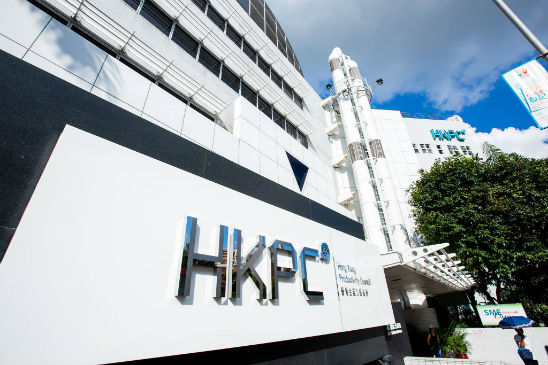Deep Learning
Cracking the Internal Health Code with Deep Learning
April 29, 2018 | Written by: Jeff Hui
Categorized: AI | Deep Learning | Power
Share this post:
The endoscope and colonoscope were first developed in 1880s to look inside the body. Specialists use their expertise and experience to examine the medical images. But sometimes, human error and backend issues can result in misdiagnosis.
Population increase and more cases of internal diseases are overloading the medical industry in many major cities in the world. In turn, the demand of medical specialists continues to soar.
However, training more medical specialists is not enough. Pathologists require long-term training and painstaking work before visually detecting abnormalities in tumor tissues by looking through the microscope and conducting invasive tests. Deep learning offers a better way to develop a diagnosis scope for medical inspection.
Going Deep on Deep Learning
Deep learning takes a step beyond generic machine learning by mimicking how we humans think. However, there is a significant difference.
 In our brain, biological neurons can connect with other neurons within a certain distance to process the data quickly. Artificial neural networks use discrete layers, connections, and directions for data to travel.
In our brain, biological neurons can connect with other neurons within a certain distance to process the data quickly. Artificial neural networks use discrete layers, connections, and directions for data to travel.
Each layer can be assigned a task. As the data goes from the first to the final layer, different tasks are applied. After the final layer, the final output is produced that will offer insights. To analyze the medical images, you often need more than 100 of such layers to identify and classify multiple appearance from millions images.
The industry always knew the usefulness of deep learning or the use of artificial neural networks for medical purposes. But the problem hindering mass adoption was compute power. It takes immense compute resources for a machine to “think” like a human, especially when adding more layers to process the data.
This changed with a new type of IBM Power Systems. Recently, the Automotive and Electronics Division of the Hong Kong Productivity Council (HKPC) has introduced this system to conduct research of deep learning for medical purposes.
Power-ing machine learning
As you can imagine, training the deep learning system on hundreds of thousands of medical images with complex networks is not trivial. It requires high-power graphic processing units, a vast internal memory and a reliable platform.
Due to the nature of Regional Convolutional Neural Networks (RCNN) for irregular objects, a single image can be broken down into thousands of regions of interest. In turn, each will create thousands of entries for computing the similarities.
To crunch and analyze unstructured data in non-linear ways, you need a lot of processing power. It is important to look for a system that had the compute power to shorten the training from weeks to hours, especially with lives at stake.
Equally important is visual image processing. The research team of HKPC uses a vast number of images of known abnormalities to train the deep learning system to detect better. They also use images that segment individual glands from tissues to make it easier for the system to distinguish individual cells, determine their size, shape, and location relative to other cells.
The IBM Power Systems platform provided them with a distributed system that supported several GPUs at the same time. It also allowed them to share any idle GPU with other colleagues to reduce idle times, increase the overall efficiency, and enable them to handle multiple projects at the same time.
The platform’s proven stability was important to the research team. After all, they wanted to help pathologists to improve their research, and not become worried about data integrity and system failures.
The Acceleration Effect
The IBM Power System S822LC for High Performance Computing (HPC) server, adopted by HKPC, leverages the NVIDIA NVLink GPU interface embedded on the POWER8 CPU, enabling a high bandwidth, low latency interconnect between CPU and GPU.
NVIDIA NVLink’s massive memory bandwidth, which has more than 2.5 times bandwidth compared to
PCIe, allowed the four NVIDIA Tesla GPUs and the dual POWER8 CPUs to offer a stable platform for deep learning.
Deployed with the help of IBM Lab, the platform is already accelerating the research in new ways. HKPC’s research team has taken a step forward to helping medical professionals to crack the internal health code.
Related

Executive, IBM Systems Hardware, IBM China / Hong Kong Limited
A New Wave: Transforming Our Understanding of Ocean Health
Humans have been plying the seas throughout history. But it wasn’t until the late 19th century that we began to truly study the ocean itself. An expedition in 1872 to 1876, by the Challenger, a converted Royal Navy gunship, traveled nearly 70,000 nautical miles and catalogued over 4,000 previously unknown species, building the foundations for modern […]
Igniting the Dynamic Workforce in Your Company
In the rapid push to moving to remote work, we’ve seen digital strategies accelerate by years – transforming their workplaces, workstyles, and business processes forever. Overnight, remote workforces put advanced environments of multi-device mobility, dynamic connection points and robust cloud-based apps that ease communication and collaboration. A new normal is emerging, led by the companies aggressively adopting cloud […]
Lessons from Space May Help Care for Those Living Through Social Isolation on Earth
Since the Crew Dragon spacecraft arrived at the International Space Station (ISS) on May 31, NASA astronauts Bob Behnken and Doug Hurley have been busy—according to their Twitter posts, even working over the weekend to repair the ISS treadmill. They likely don’t have much time to think about being lonely and cut off from life […]


